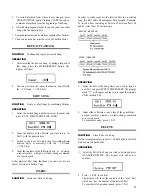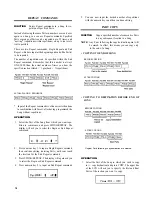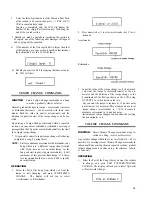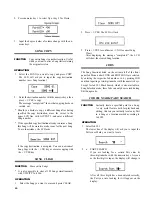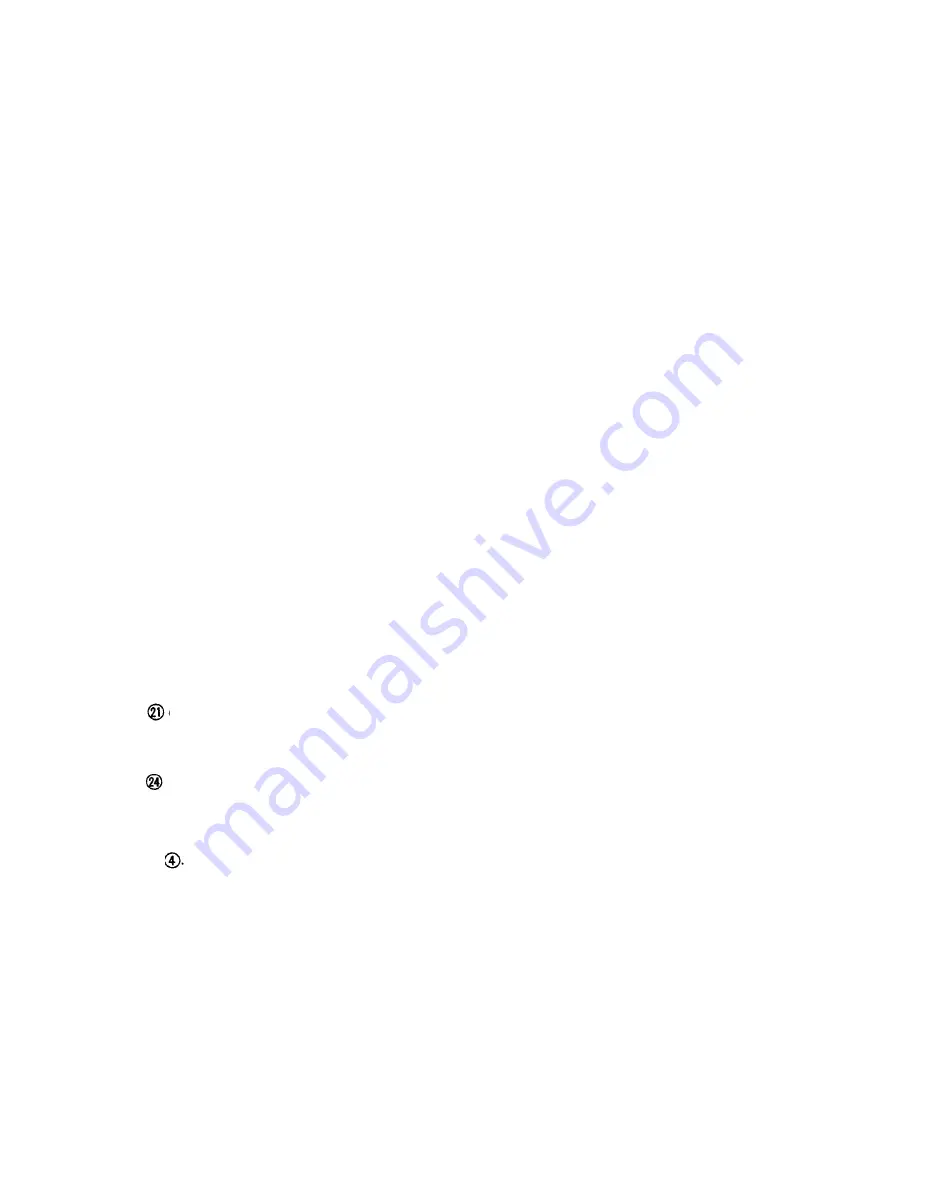
To keep the front panel compact, most keys have been given
more than one function, so the order in which they are pressed
is important. Always watch the messages on the LCD display
for guidance. In many cases, dialog-type programming is
possible, with the LCD asking you questions you can answer
by pressing YES, NO or numeric keys.
You can exit from a function mode by pressing a different
function key (or in some cases, STOP/CONTINUE).
1)
Instrument Group
Consists of the assignable Instrument keys used for
playing and programming, KEY ASSIGN which deter-
mines the voice layout, and EDIT VOICE with which
you can adjust a large number of voice parameters ac-
cording to your requirements.
The MIDI key is used to access important functions
when controlling RX7 voices from external MIDI
equipment.
2)
Sequence Group
The nine keys grouped together on the upper left all have
two distinct functions, depending on whether Pattern
or Song mode is selected. Pattern functions are written
on the top part of the key, Song functions on the lower
one.
3)
Utility Group
UTILITY functions let you check remaining Pattern and
Song memory space, clear all Patterns or Songs, turn
Memory protection on and off, and exchange voices in
existing Patterns. Saving data to (or loading it from)
RAM cartridges and tape cassettes and controlling MIDI
communication with external equipment is accomplished
with the other three keys in this group.
* Except for SYNC and JOB itself, all keys in the group
numbered on the fold-out illustration of the control
panel access functions in conjunction with the JOB key
(as do SONG and EDIT SONG for certain operations).
All Jobs and their numbers are listed on the control panel
Job Menu for easy reference.
4)
Data Entry Group
Actual programming, i.e. parameter selection and value
input, is performed mainly with these keys and the DATA
entry slider Values that can currently be input are
indicated by a flashing cursor.
The - l/NO and + l/YES keys answer questions and
shift to lower/higher values. Keeping them depressed
usually speeds up this shift.
In general, the numeric keys select Job numbers or pa-
rameters and input values. Also note the fractions printed
on them. These refer to musical time.
ACCENT 2 moves the cursor between multiple param-
eters during data entry displays. Certain inputs are fi-
nalized by pressing ENTER.
Depending on the current function, SHIFT/COMPARE
lets you compare altered data with the previous setting
or input lower case letters for Song and Mark names.
n
n
WRITING ON THE RX7
Three distinct ways of writing (= programming, recording)
Patterns are possible on the RX7: 1) in real time with the
Instrument keys, 2) in real time using a MIDI keyboard, and
3) step by step with the Instrument keys. All three pro-
gramming methods have their advantages for different ap-
plications, and you will soon discover your personal prefer-
ences.
•
Real Time Write vs. Step Write
In general, the Real Time Write mode is ideal for creating
Patterns according to hearing and rhythmic feeling, for you
can listen the Pattern being built up layer by layer as you
add the notes of different instruments.
On the other hand, Step Write mode is suitable for users
with less confidence in their sense of rhythm, when inputting
data from Pattern books or for difficult (fast, complex,
off-beat) sections.
Of course, you can use both modes in combination, for in-
stance creating the basic rhythm with Real Time Write and
adding finishing touches with Step Write.
•
Instrument Keys vs. MIDI Keyboard
During Real Time Write, you also have the choice of writing
with the RX7 Instrument keys or a connected MIDI key-
board. Particularly for bass lines, melodic sequences (toms,
bongos, guitar, brass) or passages calling for the expressive
use of different volumes (dynamics), playing voices from a
velocity-sensitive MIDI keyboard can make writing much
faster and easier.
Basic rhythm programming is usually simpler with a suitable
Instrument key layout. Dynamics, for instance, can be added
later with Edit Pattern.
n
n
EDITING
With the RX7, it is very easy to correct or alter Patterns in
almost any conceivable way AFTER they have been written.
Such operations are referred to as “editing”. Possibilities
include:
a) Overdubbing - addition of new notes/instruments to
an existing Pattern.
b) Clear - deletion of single notes or entire voices from a
Pattern.
c) Voice Change - exchanging of any voice with another
in existing Patterns.
d)
Edit Voice - overall alteration of voice parameters
(pitch, pan, level, etc.) and effects.
e) Edit Pattern - alteration of voice parameters for indi-
vidual notes in a Pattern.
5
Содержание RX-7
Страница 1: ...YAMAHA AUTHORIZED PRODUCT MANUAL DIGITAL RHYTHM PROGRAMMER ...
Страница 2: ...YAMAHA DIGITAL RHYTHM PROGRAMMER OWNER S MANUAL ...
Страница 12: ...SOUND DATA AND MEMORY CONFIGURATION 7 ...
Страница 57: ......
Страница 59: ...YAMAHA YAMAHA CORPORATION P O Box 1 Hamamatsu Japan VE17510 88 04 1 0 R3 ...






















